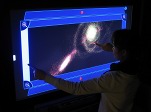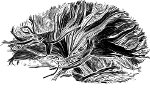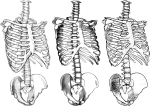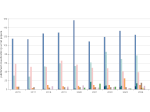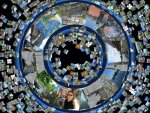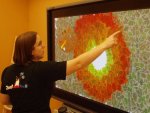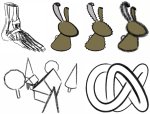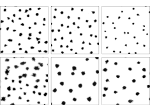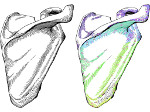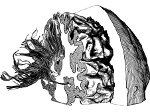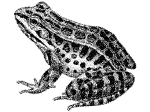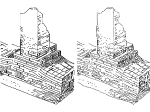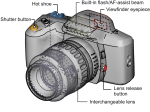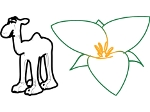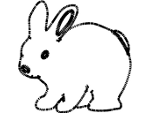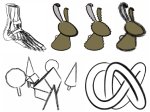High Quality Rendering
High quality images are necessary if one wants to produce NPR renderings, in particular, for print and high-resolution displays. During my research on line rendering and pen-and-ink NPR I worked on several techniques that produce such high quality images. These techniques generate vector images as output of the NPR rendering algorithms wherever possible to avoid the pixel artifacts commonly seen when regular images are displayed on high-resolution displays or media. An example image embedded as an SVG file is shown below:
Example vector graphic illustration using only four colors and black.
The hatching creates the illusion of smooth shading.
By using vector graphics rendering one can not only render line drawings but shading (such as Gooch shading) as well. This makes it possible to render complete illustrations directly as vector images so that they can be used at high-resolutions in print or other media.
Technical illustration that makes use of both shading and lines.
The shading here is a pixel graphic due to SVG limitations. See this PDF instead.
Vector graphics are quite different from pixel images and pose some very interesting challenges. For example, the surface shading technique mentioned above takes the technology to the limit as most PDF viewers do not yet support such modes at all or do not yet show them nicely anti-aliased. In addition, very detailed vector graphics can produce fairly large files and may take considerable time to render, even on fast machines, because all the fine detail is contained in a file. Thus, I am interested in approaching some research challenges left to solve such as, among others, how to achieve progressive encoding or how graphics hardware may be used to speed up the rendering process.
Selected Demos, Videos, and Projects:
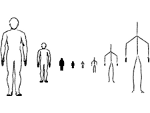
OpenNPAR: A System for Developing, Programming, and Designing Non-Photorealistic Animation and Rendering
